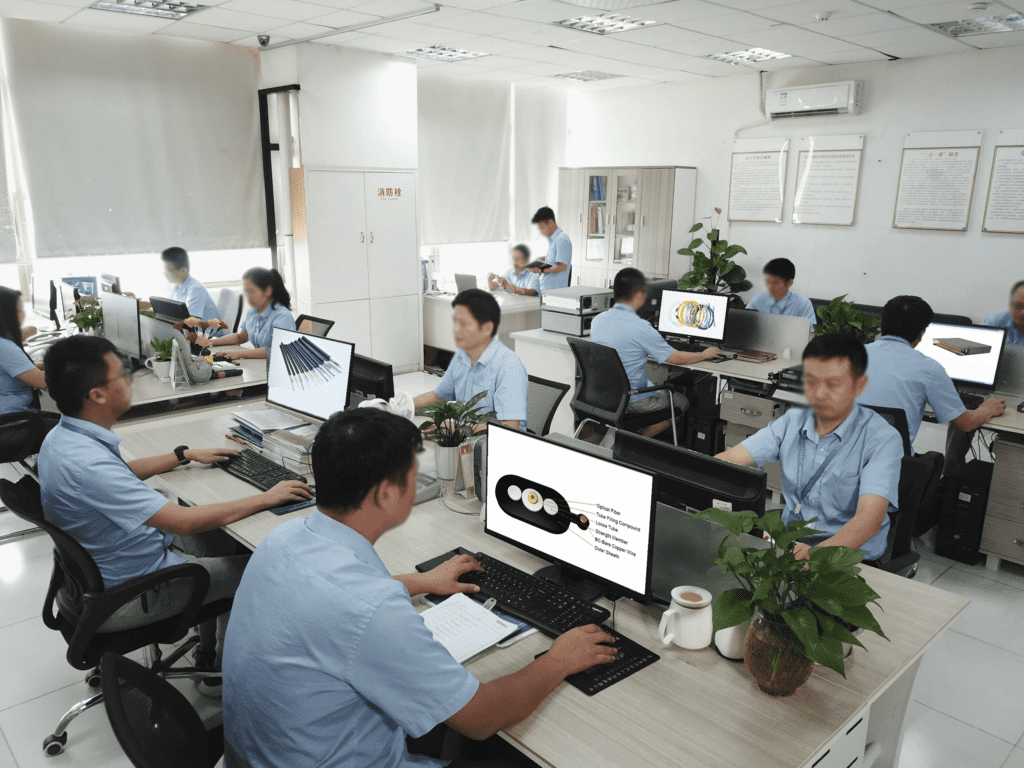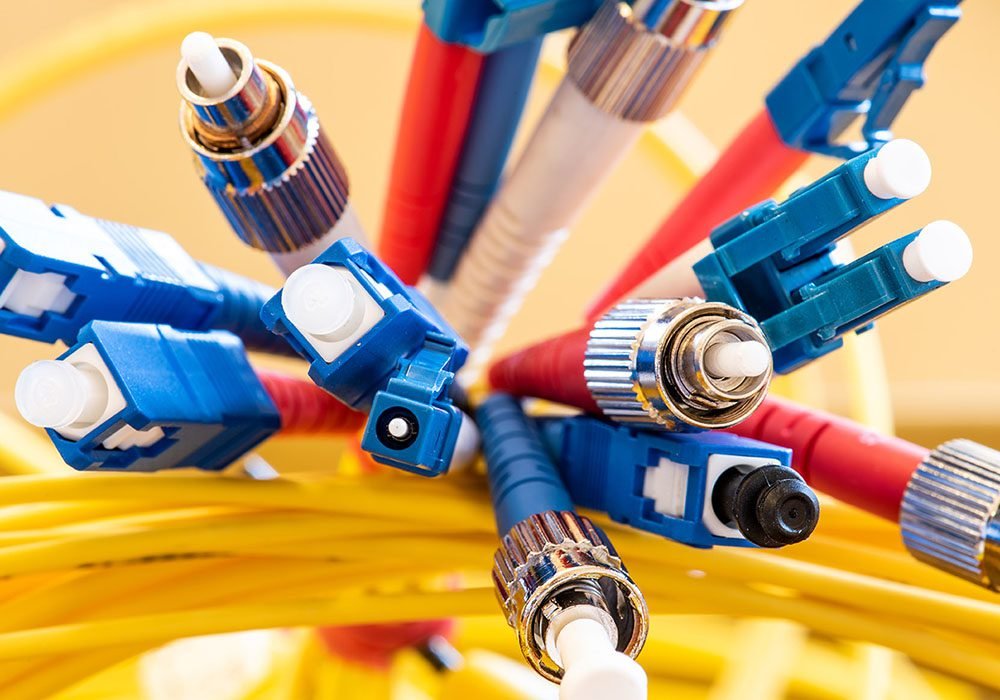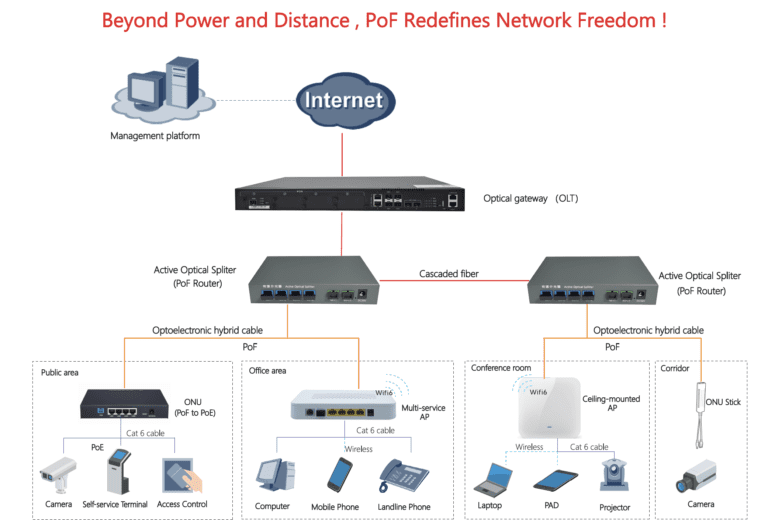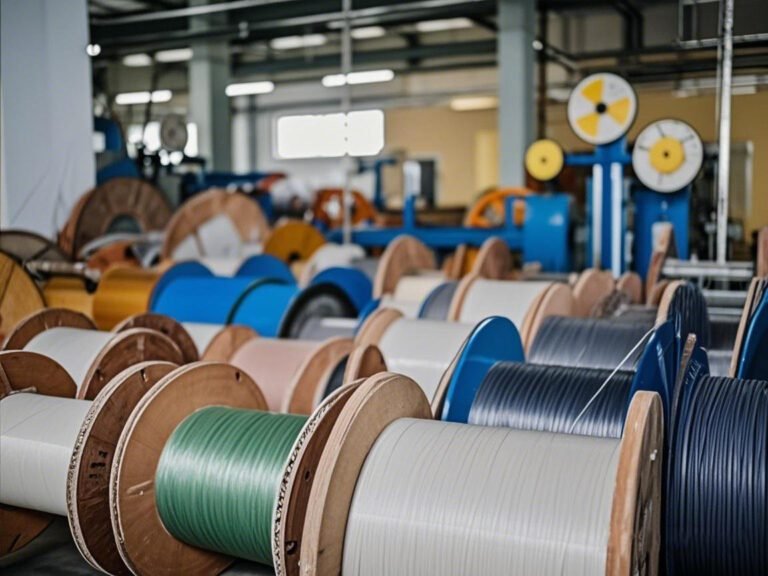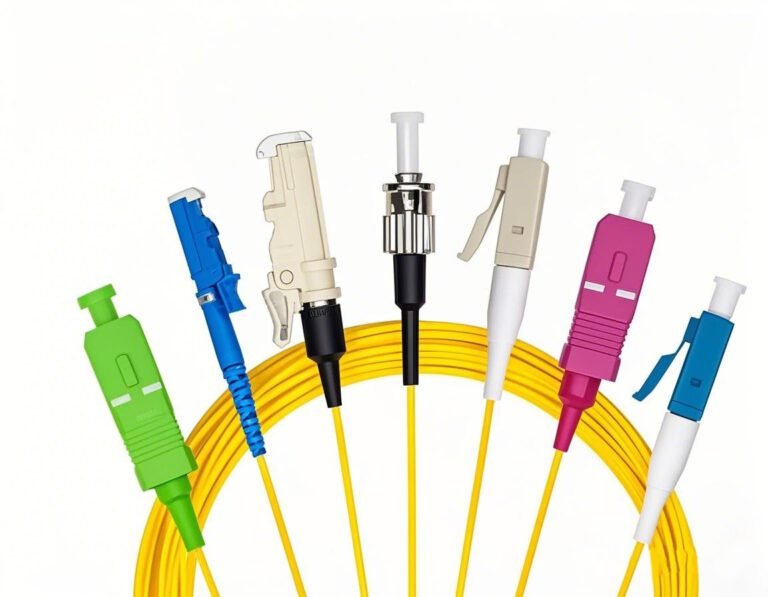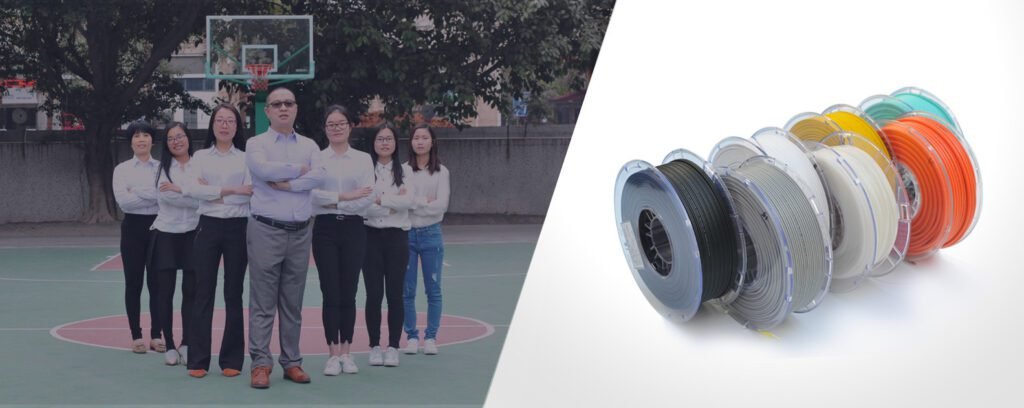The global optical fiber patch cord market was valued at $1.9 billion in 2022, and is projected to reach $3 billion by 2032, growing at a CAGR of 5% from 2023 to 2032.
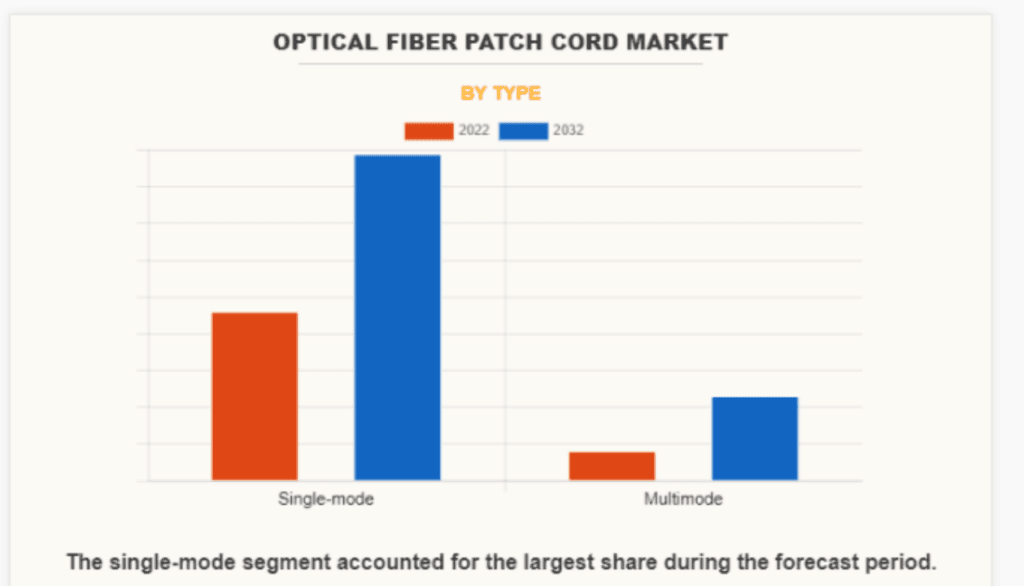
An optical fiber patch cord, also known as a fiber optic jumper or fiber optic cable, is a short-length optical cable used to connect two optical devices or components. It consists of a flexible and thin fiber optic cable with connectors on both ends.
The purpose of an optical fiber patch cord is to facilitate the transmission of optical signals between devices in a fiber optic network. The connectors on each end of the patch cord are typically different types, allowing compatibility with different devices or ports. Common connector types include SC, LC, ST, and MTP/MPO.
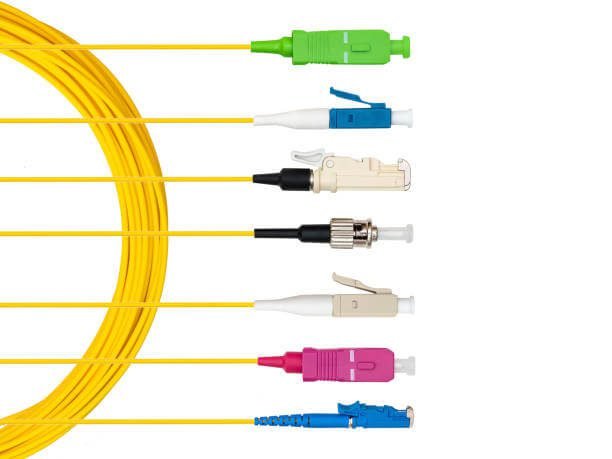
The optical fiber patch cord is designed to ensure efficient and reliable signal transmission by minimizing signal loss and maintaining proper alignment between the connected devices. The optical fibers inside the patch cord are protected by a jacket made of materials such as PVC or LSZH, providing mechanical strength and protection against environmental factors.
1. What is a fiber optic patch cord?
A fiber optic patch cord (also known as a fiber optic connector) is a fiber optic cable with connector plugs installed at both ends to achieve active connection of the optical path; the one with a plug at one end is called a pigtail. A fiber optic patch cord (Optical Fiber Patch Cord/Cable) is similar to a coaxial cable, but without a mesh shielding layer. The center is a glass core for light propagation. In multimode optical fiber, the core diameter is 50μm~65μm, which is roughly equivalent to the thickness of a human hair.
Fiber optic patch cord products are widely used in communication rooms, fiber-to-the-home, local area networks, fiber optic sensors, fiber optic communication systems, fiber optic connection transmission equipment, national defense preparedness, etc. They are suitable for cable TV networks, telecommunications networks, computer fiber optic networks and optical testing equipment.
2. What is the purpose of a patch cable?
A patch cable, patch cord or patch lead is an electrical or fiber-optic cable used to connect ("patch in") one electronic or optical device to another for signal routing. Devices of different types (e.g., a switch connected to a computer, or a switch to a router) are connected with patch cords.
3. What is the difference between fiber cable and fiber patch cord?
While both fiber patch cords and fiber optic cables are made of similar materials, such as glass or plastic fibers, they serve different purposes. Fiber patch cords are used for short-distance connections within a network, while fiber optic cables are used for long-distance transmission of data.
4. What can fiber patch cords be used for?
Uses of Fiber Patch Cables.They are used to connect switches, routers, and servers in data centers, as well as in telecommunications networks. Video Transmission: Fiber patch cables are used to transmit video signals over long distances.
5. Why are Fiber Patch Cables So Important for Your Network?
Fiber patch cables are used in your network equipment to connect between switches and servers. If the fiber patch cables fail for some reason, it will affect the network performance or even result in complete network downtime.
6. Where would you use a patch cable?
Ethernet patch cables connect a network router or Ethernet switch to network devices of different types, such as computers, digital display monitors, Wi-Fi access points or any of the new IoT devices on the market right now. For example, an Ethernet patch cable could also used to connect a router to a switch.
7.What Are the Advantage of Fiber Patch Cables?
- Transmission speed. Compared with copper cables, fiber optic patch cables have a much higher transmission speed. The transmission speed is up to 400Gbps for single-mode fiber cables and 100Gbps for multimode OM4 fiber cables.
- Transmission distance. Fiber optic patch cables can be connected to devices far away from each other because they are made of optical fibers that can be transmitted very far in the air or underwater. For example, multimode fiber cables can be extended up to 2 kilometers, while single-mode fiber cables can be extended up to 160 kilometers under ideal conditions.
- Low attenuation rate and high immunity to noise. Fiber optic patch cords are immune to electromagnetic interference (EMI) and radio frequency interference (RFI). In addition, they have the lowest attenuation loss among all the types of cable connectors, which makes them more reliable than copper cables.
- Fiber cable strands are Tiny. It has the same diameter as human hair. Their data transmission capabilities much outweigh those of their copper counterparts. Regular copper cable is four times wider and only transmits a fraction of the data. Fiber cable is lighter, more flexible, and takes up less room (and therefore easier to manage). The extra space allows for more significant cooling, more accessible access to the equipment it connects to, and a more pleasant design.
As one of the most basic components of optical network cabling, fiber optic patch cords are widely used in the construction of optical fiber links. Nowadays, fiber optic manufacturers have launched many types of fiber optic patch cords according to different application scenarios, such as MPO/LC/SC/FC/ST fiber optic patch cords, simplex/duplex fiber optic patch cords, single-mode/multi-mode fiber optic patch cords, etc. They have their own characteristics and are irreplaceable.
According to the connector, it can be divided into: FC, ST, SC, LC, MU, MPO, E2000, MTRJ, SMA, etc., and the end contact methods are PC, UPC, APC.
Optical fiber outer diameter Ф0.9mm, Ф2mm, Ф3mm, number of optical fiber cores: single core, dual core, 4 core, 6 core, 8 core, 12 core or customer specified. 3.Optical fiber types can be divided into: G652B, G652D, G655, G657A1, G657A2, 50/125, 62.5/125, OM3 (50/125-150), OM4 (50/125-300), etc.
The connector colors can be divided into: blue (commonly used for single-mode PC, UPC connectors), beige, gray (commonly used for multi-mode connectors), green (APC connectors), aqua blue (OM3); the tail sleeve colors can be divided into: gray, blue, green, white, red, black, and turquoise.
8. What are the categories of fiber optic connectors?
Fiber optic connectors, commonly known as "fiber optic connectors", are physical interfaces used to connect fiber optic cables. The SC fiber optic connector is a large square connector with a rectangular sleeve on the outside, which is fastened by a plug-in latch and does not require rotation. This type of connector is easy to plug and unplug, has small insertion loss fluctuations, high compressive strength, and high installation density. It is a fiber optic connector that can be installed in duplex, triplex, or quadruplex.
Ferrule Connector (FC). The FC was the first optical fiber connector to employ a ceramic ferrule. These connectors accurately position and secure the fiber core with the transmitter and receiver. FC connectors have been mostly supplanted by the cheaper and easier to install SC and LC connectors. However, they are still recommended in severe vibration settings because of their screw-on collet.
Straight Tip (ST). ST connector was the most popular fiber optic connector for both singlemode and multimode fiber at one point. It has a bayonet-style twist lock connector and is cheap and straightforward to install. It is still employed in industrial and military applications, although smaller form factors in other uses have mostly supplanted it.
Subscriber Connector (SC). SC, which stands for Subscriber Connector, has also been called Square Connector or Standard Connector. It is a common fiber-optic connector because of its low cost, longevity, and ease of installation for both point-to-point and passive optical networking.
Lucent Connector (LC). The LC connector was created to criticize that ST and SC connectors were overly large and readily dislodged. The footprint of an LC connection is roughly half that of an SC connector. LC is also a push-pull connection, but unlike SC, it uses a latch with a smaller ferrule, making it extremely common in data communications and other high-density patch applications.
Mechanical Transfer Registered Jack (MT-RJ). MT-RJs are compact, duplex fiber connectors with both fibers terminating on a single 2.45 x 4.4 mm ferrule. They are nearly half the size of SC connections and use plastic latches similar to RJ-45 connectors to attach and disengage from their ports. Two pins on transceivers provide for simple connection alignment.
MTP/MPO (Multiple-Fiber Push-On/Pull-Off). The MTP/MPO connector features a horizontal, multi-fiber interface that is optimized for use with high-bandwidth QSFP, QSFP28, QSFP-DD transceivers. The connections are roughly the same width as SC connectors, but they may be stacked vertically in patch panels and switches. They’re suited for high-bandwidth applications like cloud computing and core data centers.
CS Connector. The CS connector is a small single-position plug with two cylindrical, springloaded butting ferrules (typically 1.25 mm in diameter) and a push-pull coupling mechanism. The connectors’ optical alignment mechanism is either a stiff bore sleeve or a resilient sleeve. CS connectors are the next stage in giving higher performance while reducing the size by 40%. These miniature connectors enable a 40% horizontal size reduction over the LC duplex and are QSFP-DD and OSFP compliant.
SN Connector. SN Connector is a next-generation connector designed by SENKO Advanced Components. This innovative duplex connector, optimized for 400G transceivers, is an alternate solution for next-generation high-density Data Centers, Hyperscale, Edge, and Enterprise environments.
Enterprise Systems Connection (ESCON). IBM designed Enterprise Systems Connection (ESCON) in the early 1990s as a serial half-duplex optical fiber interface to connect mainframe computers to peripheral devices such as tape drives, hard drives, and disk storage devices. The previous, more expensive, and slower copper-based parallel bus and tag channel technology was superseded by ESCON.
E2000 (LSH) Connector: The E2000 Connector is a few fiber optic connectors with a spring-loaded shutter that completely shields the ferrule from dust and scratches.
MU connectors. It was developed by NTT. The MU connectors are made of plastic and have 1.25mm Zirconia ferrules. MU connectors are optical connectors that have been miniaturized and enhanced in terms of density, applicability, and performance.
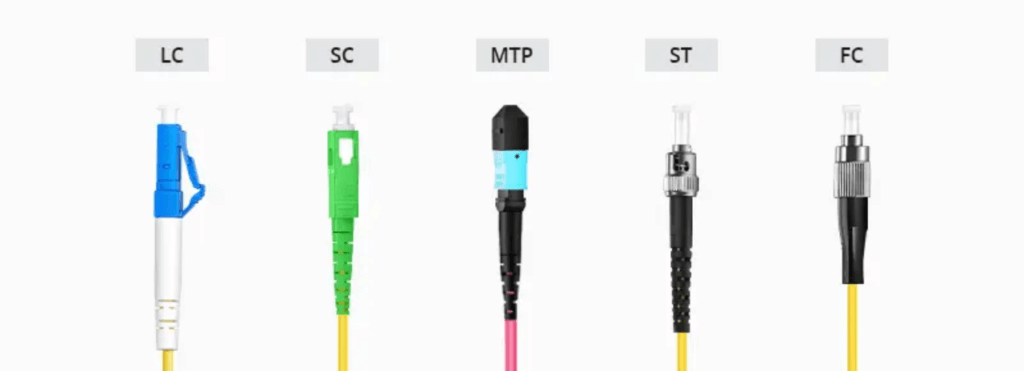
9. What are Fiber Patch Cable Jackets?
The National Electrical Code (NEC) specifies fire resistance limits for fiber optic cables. Indoor fiber installations are often categorized as a plenum, riser, or general-purpose. Fiber patch cables placed in plenum areas and risers must fulfill the flame spread and smoke generation criteria established in NEC Article 770 and the UL 1651 Standard for Optical Fiber Cable.
OFNP is an abbreviation for Fiber Optic Non-Conductivity Plenum. OFNP fiber cables are resistant to fire and smoke. They may be inserted in pipes , plenums, and other areas where gas streams are being built. This is the highest degree of fire-rated cable; no other cable may be used in its place.
OFNR is an acronym that stands for Optical Fiber Nonconductive Riser. OFNR fiber cables are employed in Riser regions, which are used to create vertical shafts or run from one level to another. OFNR fiber cables cannot be put in the ventilation area because they lack the fire and smoke ratings needed by Plenum-approved cables.
OFNP plenum cables can be used in place of OFNR fiber cables. OFNG refers to Optical Fiber Nonconductive General-Purpose. They are often utilized for single-layer horizontal wiring applications. OFNP and OFNR cables can be used in place of OFNG cables.
10. According to the optical transmission mode, it can be divided into single-mode fiber optic patch cords and multi-mode fiber optic patch cords. Single-mode fiber optic patch cords can only transmit one mode of light. The central glass core is very thin and the smaller diameter makes the reflection more compact. It only allows one mode of light to propagate, so that the optical signal can propagate farther, which is more suitable for long-distance transmission and the optical signal is more stable.
Multi-mode fiber optic patch cords allow multiple modes of optical fiber transmission. Due to the larger core size and greater dispersion, the optical signal "diffuses" faster, so it is more suitable for short-distance transmission, such as audio, video applications and local area networks. Some multi-mode optical fibers can support high-speed data transmission.
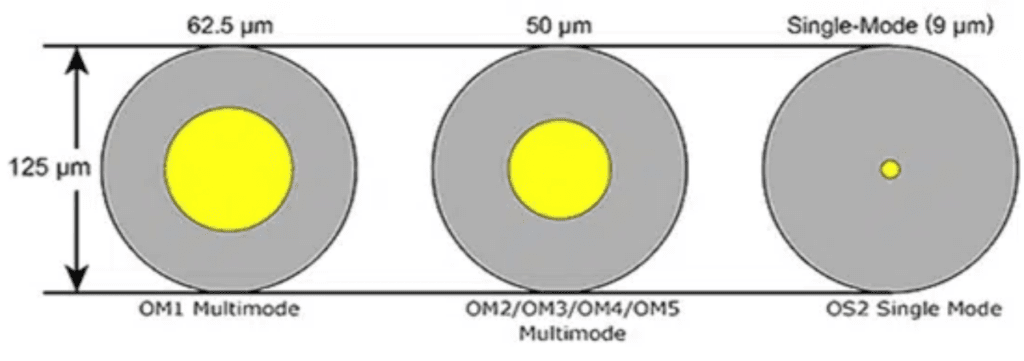
11. In order to make the end faces of the two optical fibers contact better, the end faces of the ferrules of the fiber jumpers are usually polished into different structures. Common polishing methods include: PC, APC, and UPC. PC/APC/UPC represent the front face structure of the ceramic ferrule.
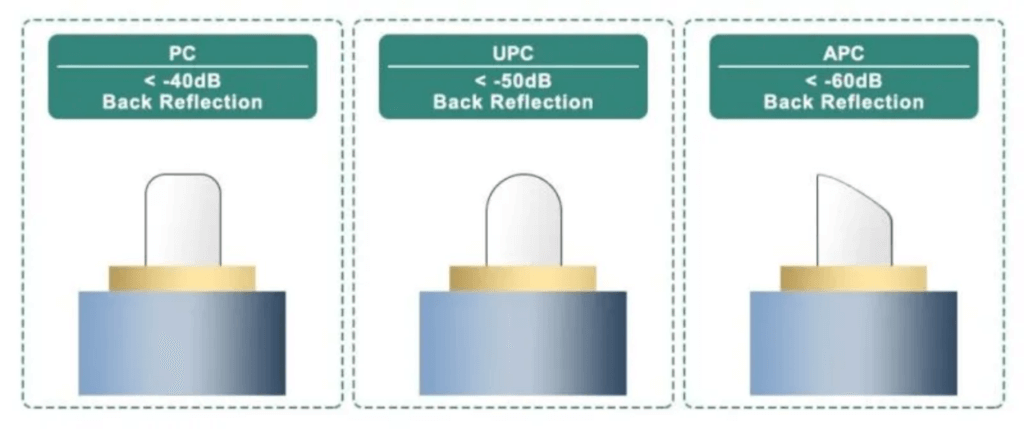
PC is a micro-spherical polishing, that is, the surface of the ferrule is polished into a slight spherical surface, and the fiber core is located at the highest point of the bend, which effectively reduces the air gap between the optical components and makes the two fiber end faces physically contact.
APC is called bevel physical contact, and the fiber end face is usually polished into an 8-degree bevel. The 8-degree bevel can make the fiber end face tighter, and can directly reflect light to the cladding, providing better connectivity.
UPC, ultra-physical end face. The UPC connector optimizes the finish of the end face polishing box surface based on PC, and has a slight arc to achieve more precise docking.
According to the working mode of the optical fiber connector, it can be divided into simplex optical fiber and duplex optical fiber. The signal of simplex optical fiber can only be transmitted in one direction and can only be transmitted in one direction, not in the reverse direction. It is generally composed of one optical fiber and one connector. The signal of duplex optical fiber can be transmitted in the reverse direction and is composed of two optical fibers and two connectors.
Do not bend or loop the optical fiber excessively during use, as this will increase the attenuation of light during transmission. After using the optical fiber patch cord, be sure to protect the optical fiber connector with a protective cover, as dust and oil will damage the optical fiber coupling. If the optical fiber connector is dirty, you can use a cotton swab dipped in alcohol to clean it, but it is recommended to use a professional dust removal instrument, otherwise dust will affect the communication quality.
Conclusion
It is essential to know these eleven things before you buy fiber patch cables. Many patch cables vary with different connectors, fiber polish, length, jacket material, and fiber count. Knowing what your need is will save much time and money.
